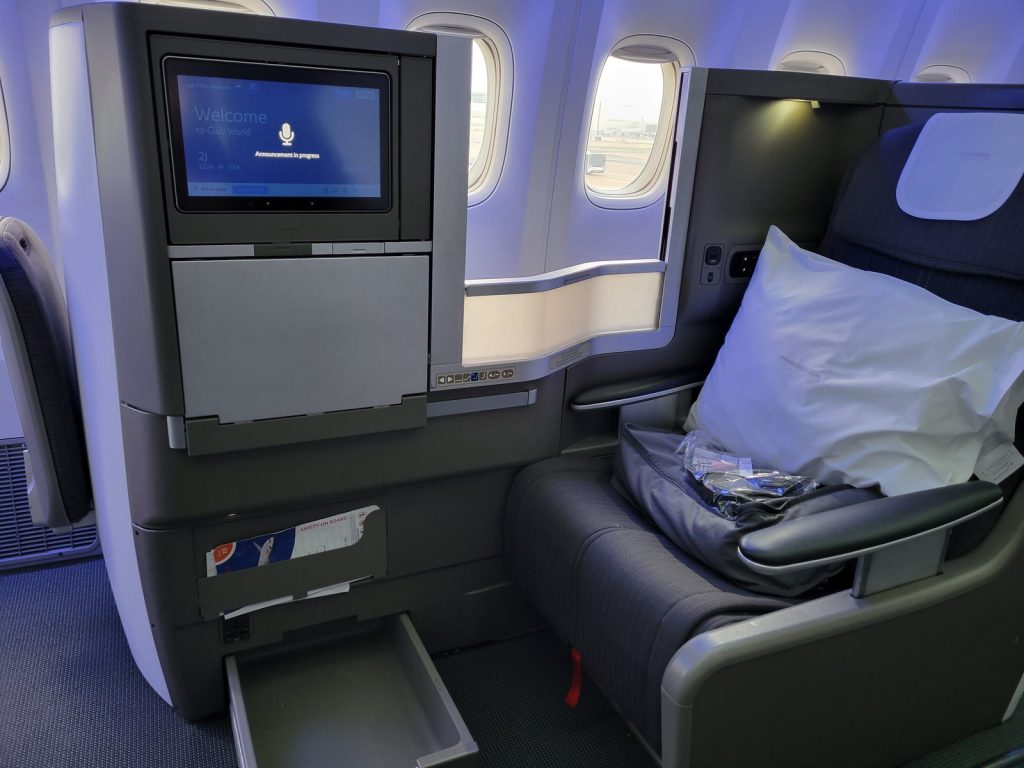One of the keys to booking award flights is understanding different airlines’ award charts. Most airlines publish their own sets of award charts and rules, which show how many miles you need for an award flight. Award charts vary widely among airlines, but generally fall into three basic categories: zone-based, distance-based, and dynamic pricing. Below we break down how each one of these works.
Table of Contents
ToggleZone-Based Award Charts
Zone-based award charts are a bit more common and basically split the world into different zones that generally reflect regions of the globe, such as North America, Europe, the Middle East, etc. For a zone-based award chart, an airline will charge you a set number of miles to fly from one zone to another, no matter the flight distance. In other words, under a zone-based award chart, flying from New York to Paris should cost the same as flying from Atlanta or Miami to Paris since all three cities of origin are within the same region. Examples of airlines with zone-based award charts include American Airlines, Virgin Atlantic, and Singapore Airlines.
As an example of a zone-based chart, let’s look at AA’s award chart for flights originating in the contiguous 48 US states or Canada:

Distance-Based Award Charts
Distance-based award charts disregard zones and instead charge you based on the number of miles flown. Airlines with distance-based award charts include British Airways, Iberia, and Japan Airlines.
Distance-based award charts can provide incredible value for non-stop flights. One thing to watch with distance-based charts is that the cost is based on the number of miles you fly, so that includes connections. Typically, non-stop flights are the best way to redeem flights on distance-based award charts. As an example of a distance-based award chart, let’s look at British Airways’ award chart for flights on Oneworld partner American Airlines:

Choosing between Zone-Based and Distance-Based Award Charts
Given the option, when should you use which chart? Typically, distance-based award charts are better for short hop flights–think New York to Boston, or Washington, DC to Chicago. Zone-based charts provide greater value for long-distance flights, especially ones that require connections.
Here’s an example based on the two award charts above. Say you want to fly on AA from Miami to Montego Bay, Jamaica, 524 miles away. Which of those two award charts would you rather use? American Airlines will charge you at least 12,500 AA miles (off peak) to fly from Miami (continental US) to Montego Bay. Meanwhile, British Airways will charge you 7,500 BA Avios for that exact same flight on that exact same plane. 7,500 sure looks a lot better than 12,500 AA miles, doesn’t it?
Now here is an example of when AA's zone-based chart could make more sense. Let's say you want to fly from New York (JFK) to Los Angeles. AA will charge you the same 12,500 AA miles as for the Jamaica flight above. This is true for either a non-stop flight or a connecting flight. Meanwhile, BA will charge you 13,000 BA Avios for a non-stop flight (and even more for a connecting flight, depending on where you connect). So in this case, AA's chart requires fewer miles than BA's.
Dynamic Pricing
The third type of award chart is actually no award chart at all. Under dynamic pricing, an award flight does not cost a fixed number of miles. This means the number of miles required for an award flight can change widely from day to day and route to route. Dynamic pricing is less transparent for customers, who can’t ever know for sure what their miles can be used for. Airlines that have adopted dynamic pricing include United, Delta, and AirFrance/KLM.
Due to the lack of certainty, dynamic pricing requires a bit more thought when deciding to open a new card. For example, despite the high welcome offer for the Chase United Quest card, I can't be sure of how far those UA miles will take me. Therefore, this offer might not work as well for me if I don’t live near a United hub. On the other hand, I know that after meeting the minimum spend for the current welcome offer for the CitiBusiness AAdvantage Platinum Select Mastercard, I will basically have enough AA miles for a one-way flight on Qatar Airways’ Q Suites to South Africa, Qatar, or even the Maldives.
The slight upside to dynamic pricing is that you can sometimes find a cheap flight that would cost less than what an award chart would require. But this does not make up for the uncertainty and lack of transparency.
Final Thoughts
Savvy award travelers know when to use each type of award chart. This helps determine which partner to transfer their credit card points to. Of course, a lot of other factors go into determining how to book an award. These include whether there is actual award availability, the cost in miles, and whether any fees or surcharges are added. Knowing the benefits of distance- and zone-based charts can make your miles go much farther.
Do you use either type of award chart more often than the other? Come join our Facebook group and let us know.








